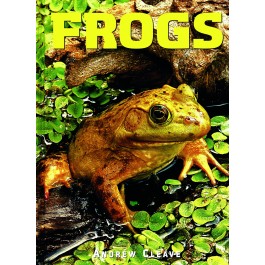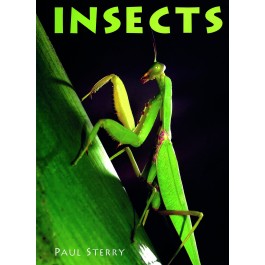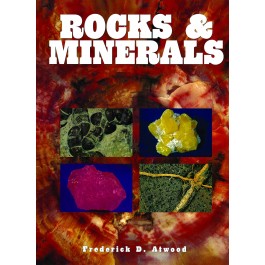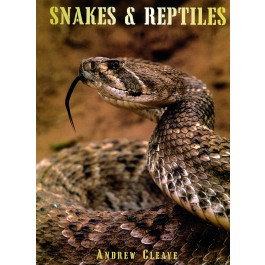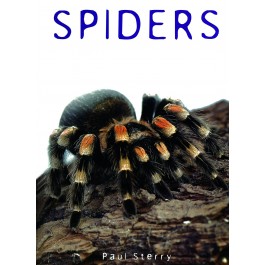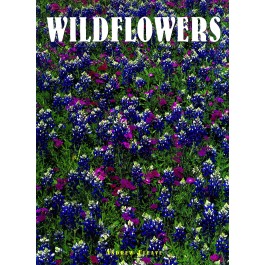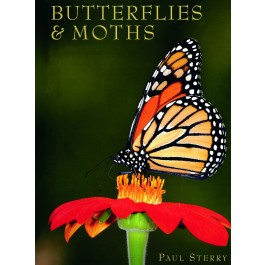EXPLORING NATURE

7
2018
12+
7th - 12th
8 1/4 x 11 3/8
SLJ Review
So often books about spiders and butterflies or snakes and reptiles are written for a younger audience. This series is the exception—high school students interested in the natural world and willing to engage with densely packed volumes are the intended audience. Each title provides a comprehensive exploration of the subject. Butterflies & Moths, for example, begins with a general introduction and then covers anatomy, flight and migration, wing patterns and colors, various species, the life cycle, and some of the environmental challenges these creatures face. A variety of differently sized bold photographs break up the text; some are even a full page. An extensive index, Internet resources, and educational videos available through QR codes are included in the back matter. VERDICT An information-rich resource for studious teens.by Andrew Cleave
| Hardcover | ISBN 978-1-4222-3957-5 | $24.95 | Add To Cart |
| eBook | ISBN 978-1-4222-7822-2 | $31.95 | Add To Cart |
FROGS and toads are some of the most interesting creatures of the amphibian world. Their variety is enormous, from the familiar bullfrog of ponds and lakes to the exotic but deadly arrow-poison frog of the tropical rain forests. Their history stretches back 300 million years, and their ancestors may have been among the first animals to leave the water for life on land. Readers will introduce themselves to a few of the more than 2,700 species known today, including barking frogs, horned frogs, tree frogs, glass frogs, and Goliath frogs—as well as Surinam toads, fire-bellied toads, spade-foot toads, and midwife toads. Beautiful photos and detailed text also touch on familiar species found in gardens and backyards. Dive into facts about frog and toad habits and behavior, covering feeding, defense, locomotion, communication, courtship, and mating. Finally, see the amazing process of metamorphosis—from egg to tadpole to froglet. This colorful and informative book, illustrated with 80
full-color photos, is a valuable addition to any animal lover’s library.
by Paul Sterry
| Hardcover | ISBN 978-1-4222-3958-2 | $24.95 | Add To Cart |
| eBook | ISBN 978-1-4222-7823-9 | $31.95 | Add To Cart |
When most people think of insects, they picture swarms of annoying, biting mosquitoes or voracious carpenter ants eating away at houses. But the world of insects is much more: a fascinating realm of more than a million species. The incredible diversity and adaptability of insects have helped them exist in a variety of environments and in adverse conditions. Evidence of insects exists in fossil records dating back millions of years, and they persist today in vast numbers despite humans’ attempts to control them. And while many people still view them as mere pests, insects are also valued for the vital roles they play in the food chain, pollinating plants and preying on other insects. This vividly illustrated volume offers a guided tour of the insect world, examining a variety of species from across the globe. With 86 color photographs, this informative guide offers a lively introduction to the world of
insects.
by Frederick D. Atwood
| Hardcover | ISBN 978-1-4222-3959-9 | $24.95 | Add To Cart |
| eBook | ISBN 978-1-4222-7824-6 | $31.95 | Add To Cart |
Practically everything we do or use in our daily lives depends on materials we take from the ground. The history of our exploration of the world has often centered on obtaining strategic mineral resources. For example, the lust for gold funded much of the exploration and conquest of the Americas by Europeans. Look around you now and see all the things that are made out of rocks and minerals. The paper of this book, though mostly plant fiber, has probably been created using kaolin, sulfur, and barium (from barite). Metals, extracted from ores have given us all kinds of objects including cans, cars, coins, building materials, and alloys such as pewter, bronze, brass, and stainless steel. Plastic, which we use more of than steel, aluminum, and copper combined, is made from petroleum, the mineral remains of ancient plankton. Explore the amazing facts and observe the beautiful patterns nature has created right beneath our feet. ROCKS & MINERALS provides a fascinating, full-color tour of
rare gems and (not so) common rocks, perfect for experienced rock lovers and those just dipping their toes into geology.
by Andrew Cleave
| Hardcover | ISBN 978-1-4222-3960-5 | $24.95 | Add To Cart |
| eBook | ISBN 978-1-4222-7825-3 | $31.95 | Add To Cart |
SNAKES & REPTILES is a colorful account of the variety and uniqueness of these often misunderstood creatures. Because most reptiles are predators, they have well-developed sensory systems to aid them in finding prey and avoiding danger. Reptiles are cold-blooded and rely on the temperature of their surroundings to control their body heat. Readers will discover these and many other facts, in addition to color pictures, in SNAKES & REPTILES. Explore the great variety of snakes—for example, boa constrictors, pythons, cobras, and rattlesnakes—from around the world. Learn how to tell those that are poisonous apart from the many that are not. In addition, you’ll find details about other types of reptiles, including iguanas, geckoes, chameleons, alligators, and crocodiles. SNAKES & REPTILES will fascinate anyone seeking a better understanding of these resourceful and remarkably adaptable groups of
animals.
by Paul Sterry
| Hardcover | ISBN 978-1-4222-3961-2 | $24.95 | Add To Cart |
| eBook | ISBN 978-1-4222-7826-0 | $31.95 | Add To Cart |
SPIDERS live on every continent and in almost all terrestrial habitats capable of supporting life. Some spiders have ventured into the world of freshwater, and a few can even tolerate salt water. There is a huge variety in color among species, and sizes can vary from smaller than a grain of rice to exceeding the span of an adult’s hand. Many are beautifully marked and fascinating to look at. For some, such as the crab spiders, the coloration serves as camouflage, but for others scientists are still investigating their purpose. In this book, readers can also explore their fascinating and complex behavior patterns. Naturalists young and old will enjoy getting the facts about spiders’ physical structure and growth, silk production and web-building, fangs and venom, camouflage, webs, tunnels and traps, courtship and reproduction, and self-defense. SPIDERS opens a door onto the fascinating life styles and habits of these most engaging
creatures.
by Andrew Cleave
| Hardcover | ISBN 978-1-4222-3962-9 | $24.95 | Add To Cart |
| eBook | ISBN 978-1-4222-7827-7 | $31.95 | Add To Cart |
Everyday dandelions or showy orchids—wildflowers come in an amazing variety of colors, shapes, and sizes. The flowers all of us enjoy in our gardens and from florists—roses, irises, and orchids—were all developed from wild species. In their natural states, wildflowers add color and beauty to even the harshest of landscapes. Always a joy to look at, wildflowers also display some incredible adaptations to extreme environments. From snow-crested mountaintops to hot, arid deserts, to the lush heat of the tropical rain forests, beautiful blossoms have found a way to thrive. Inside this book, readers will discover wildflowers from all over the world—from far-off lands and nearby roadsides. WILDFLOWERS provides a close look at some of the most gorgeous and fascinating flowers in the world. Exotic orchids, blossoming cacti, and floating water lilies are all captured in over 80 brilliant color photographs. Gardeners, nature lovers, and anyone who appreciates these interesting plants
will enjoy this book.
by Paul Sterry
| Hardcover | ISBN 978-1-4222-3956-8 | $24.95 | Add To Cart |
| eBook | ISBN 978-1-4222-7821-5 | $31.95 | Add To Cart |
BUTTERFLIES & MOTHS is a colorful and informative guide to this popular group of insects. Beginners and experts will enjoy new discoveries on every page. Known in scientific circles as Lepidoptera, butterflies and moths, while closely related, display wildly different characteristics. At a glance we can usually tell a butterfly from a moth by whether it flies during the day or the night. Butterflies are day flyers, and moths are most often nocturnal. Look inside for more details about and gorgeous photos of swallowtail butterflies; blue, copper, and hairstreak butterflies; burnet moths; and atlas, silk, and hawkmoths. See their remarkable metamorphosis process up close: the egg, the larval or caterpillar stage, the pupal stage, and finally the adult—the full-grown, high-flying insect. BUTTERFLIES & MOTHS is a celebration of the beauty and diversity of insects that scientists and naturalists have studied for
centuries.











